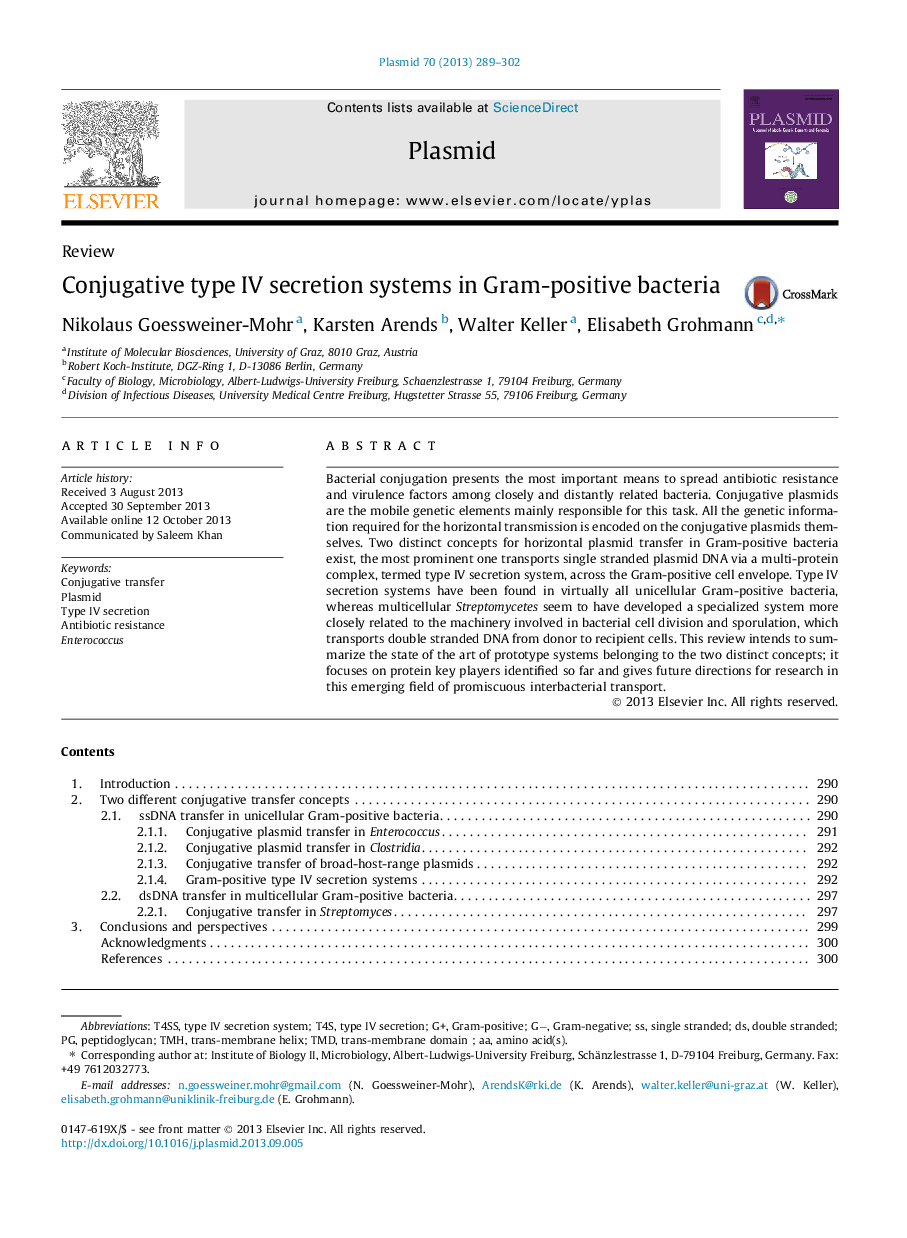| Article ID | Journal | Published Year | Pages | File Type |
|---|---|---|---|---|
| 2824113 | Plasmid | 2013 | 14 Pages |
•The conjugative transfer mechanism of broad-host-range, Enterococcus sex pheromone and Clostridium plasmids is reviewed.•Comparisons with Gram-negative type IV secretion systems are presented.•The current understanding of the unique Streptomyces double stranded DNA transfer mechanism is reviewed.
Bacterial conjugation presents the most important means to spread antibiotic resistance and virulence factors among closely and distantly related bacteria. Conjugative plasmids are the mobile genetic elements mainly responsible for this task. All the genetic information required for the horizontal transmission is encoded on the conjugative plasmids themselves. Two distinct concepts for horizontal plasmid transfer in Gram-positive bacteria exist, the most prominent one transports single stranded plasmid DNA via a multi-protein complex, termed type IV secretion system, across the Gram-positive cell envelope. Type IV secretion systems have been found in virtually all unicellular Gram-positive bacteria, whereas multicellular Streptomycetes seem to have developed a specialized system more closely related to the machinery involved in bacterial cell division and sporulation, which transports double stranded DNA from donor to recipient cells. This review intends to summarize the state of the art of prototype systems belonging to the two distinct concepts; it focuses on protein key players identified so far and gives future directions for research in this emerging field of promiscuous interbacterial transport.
